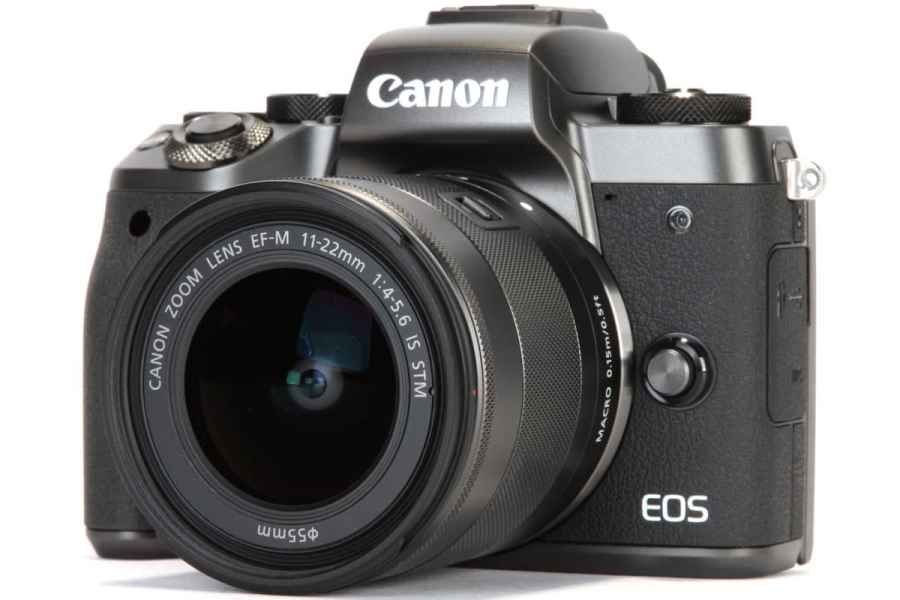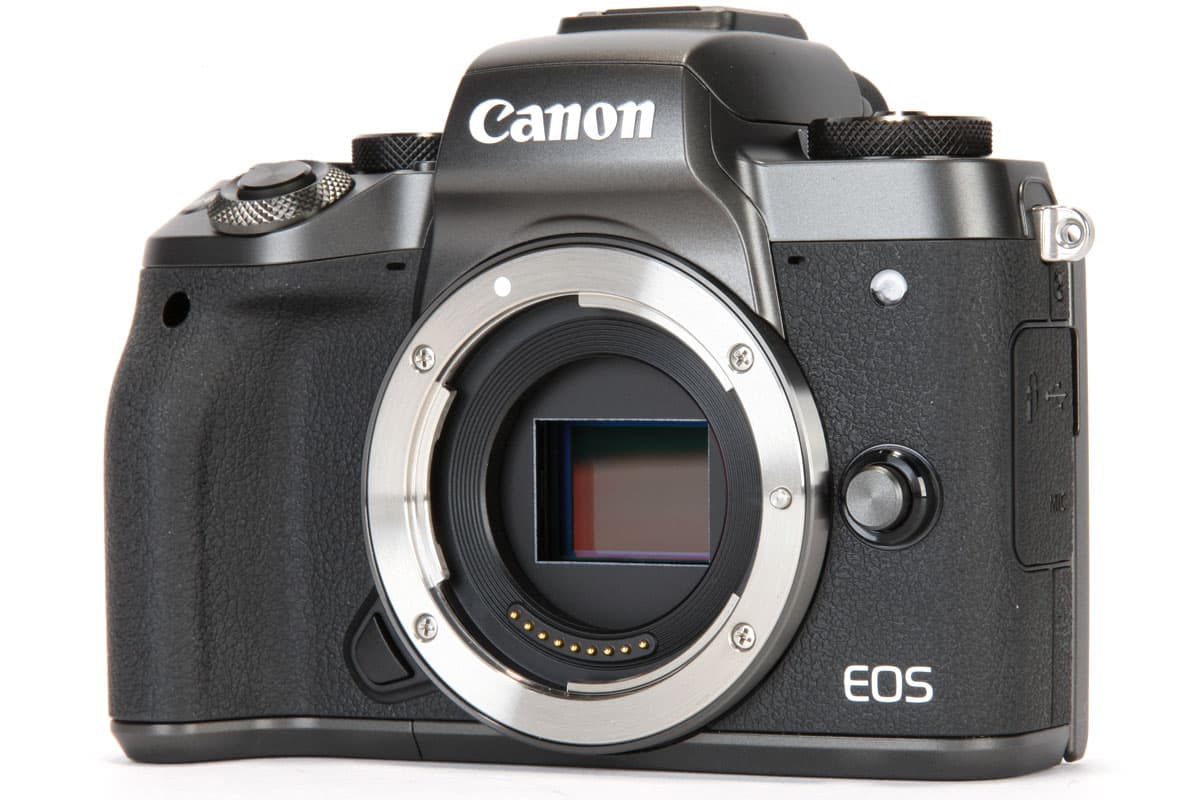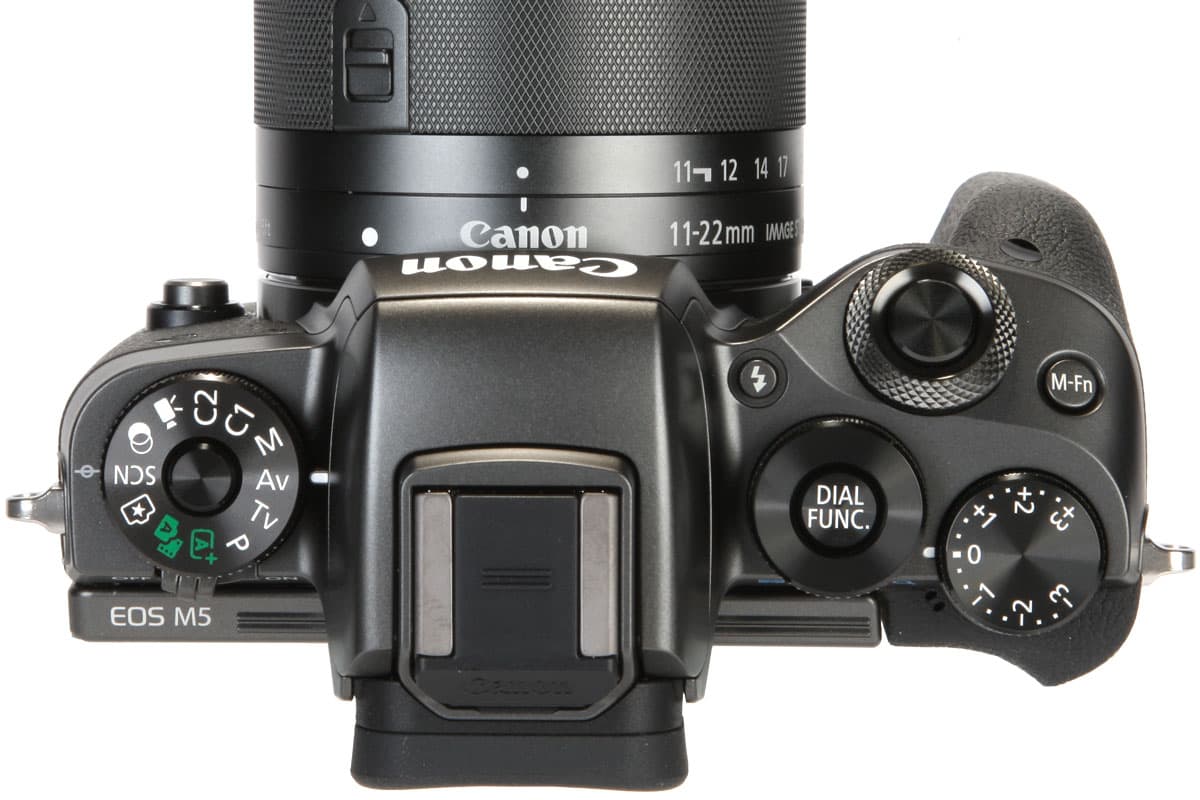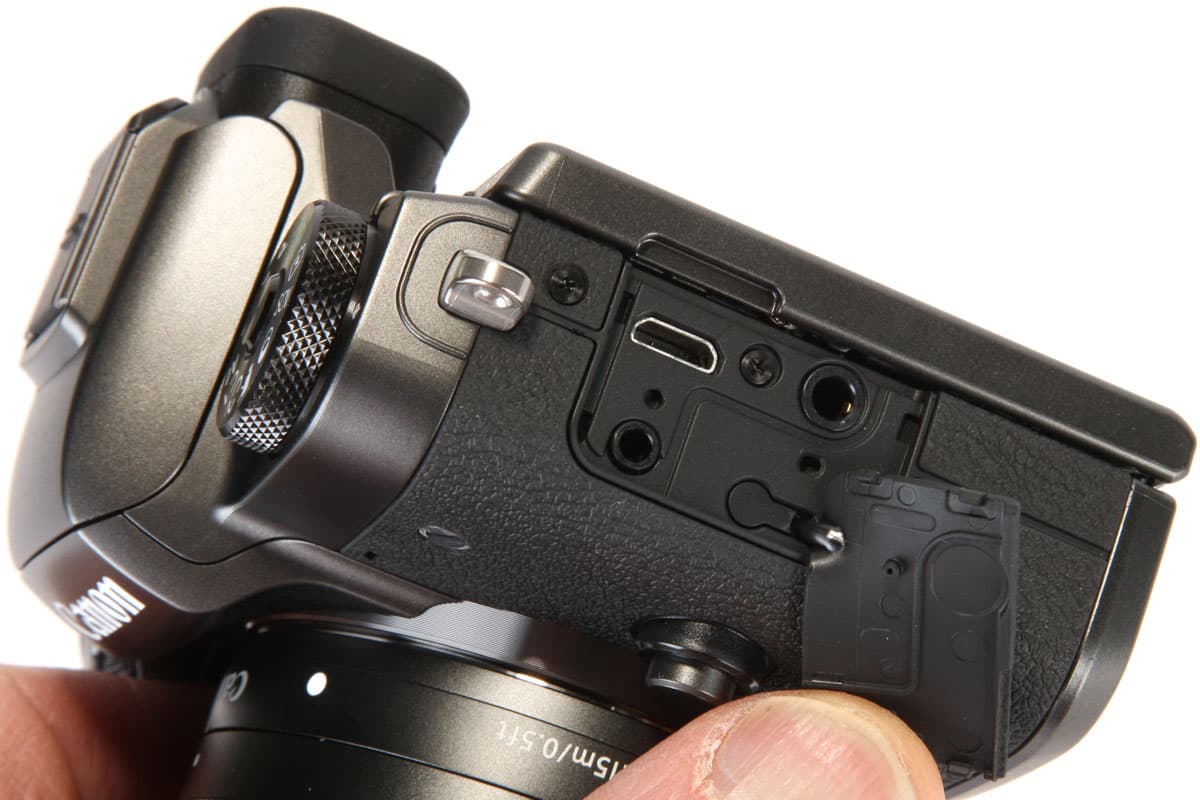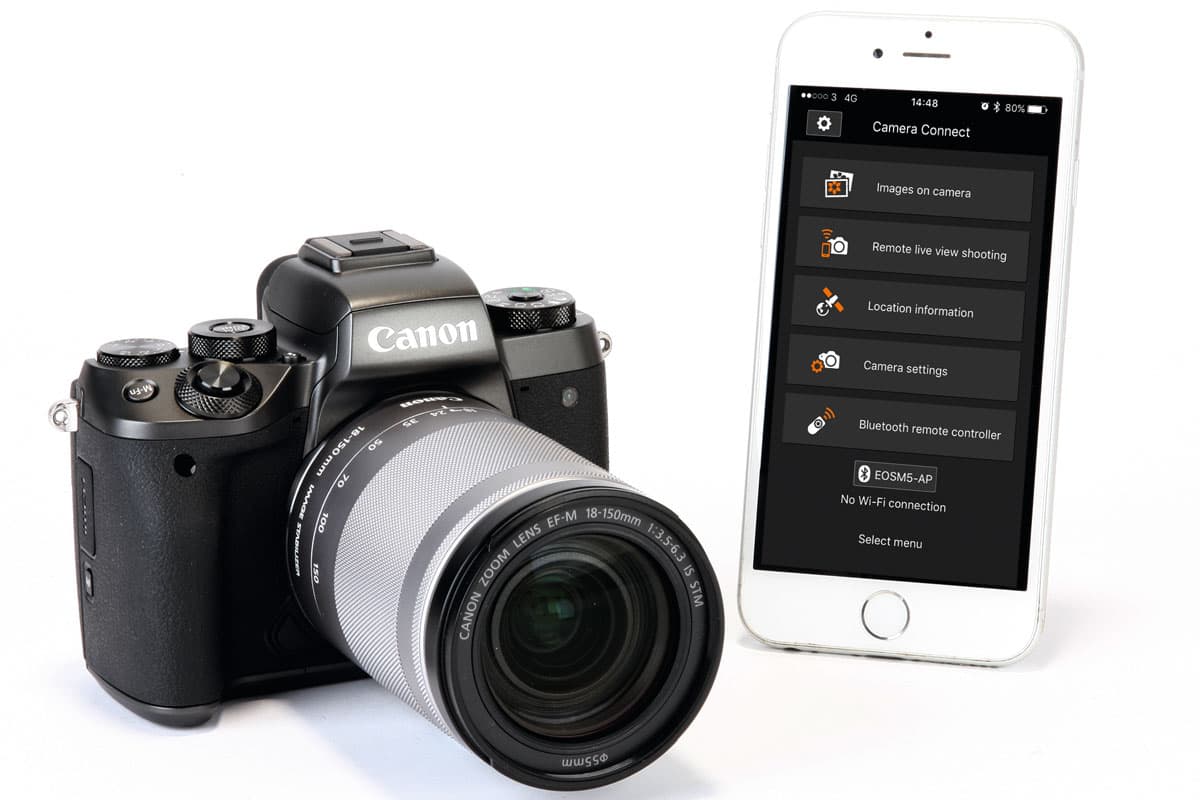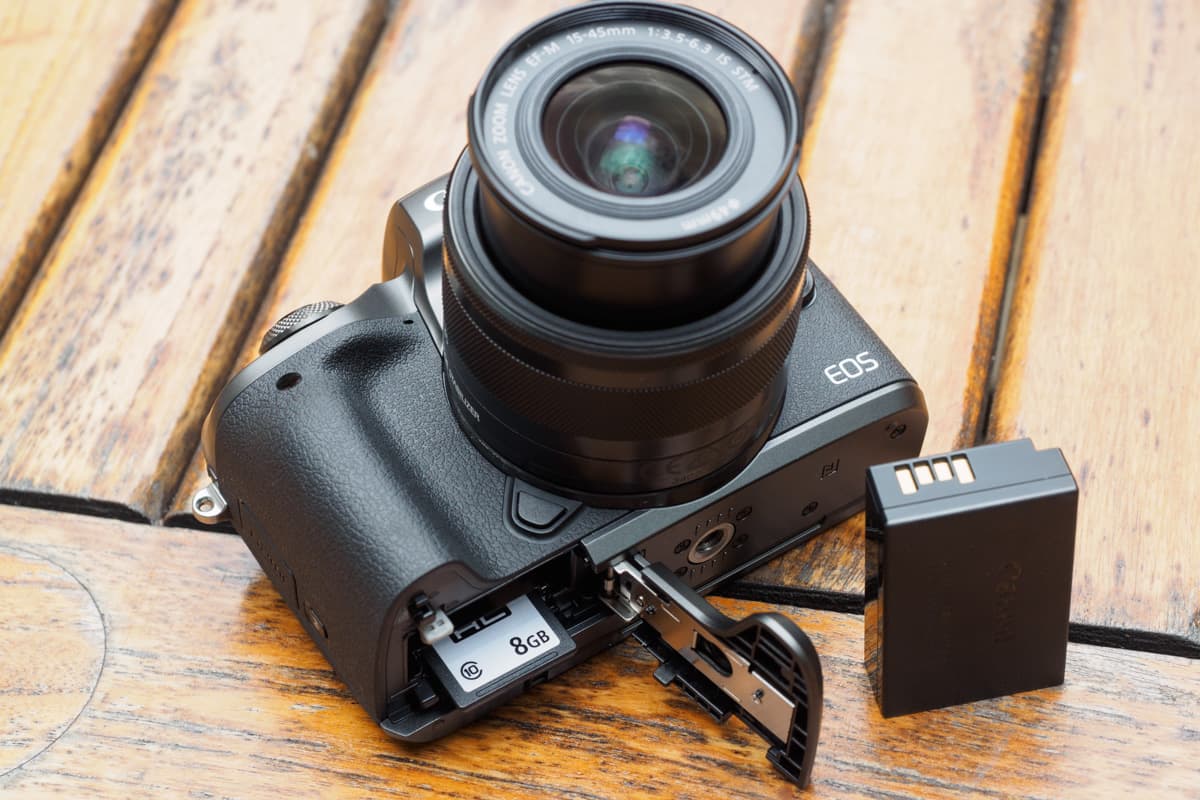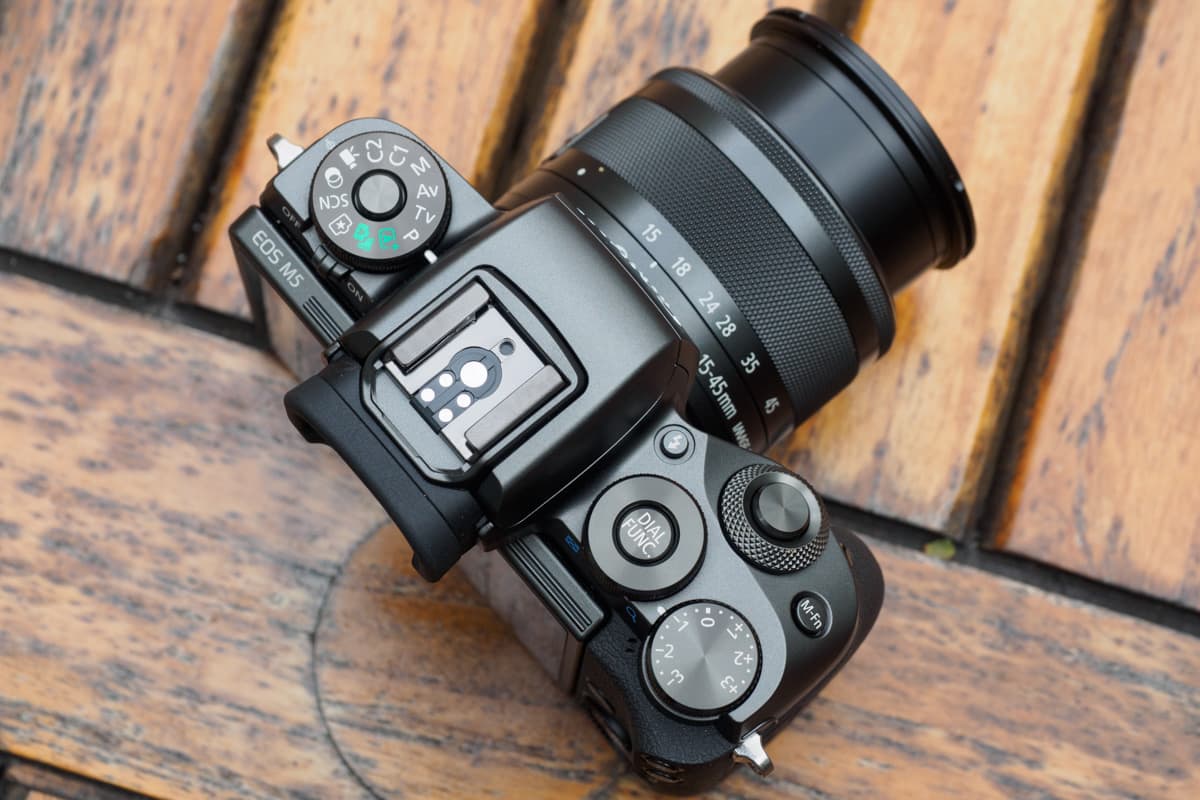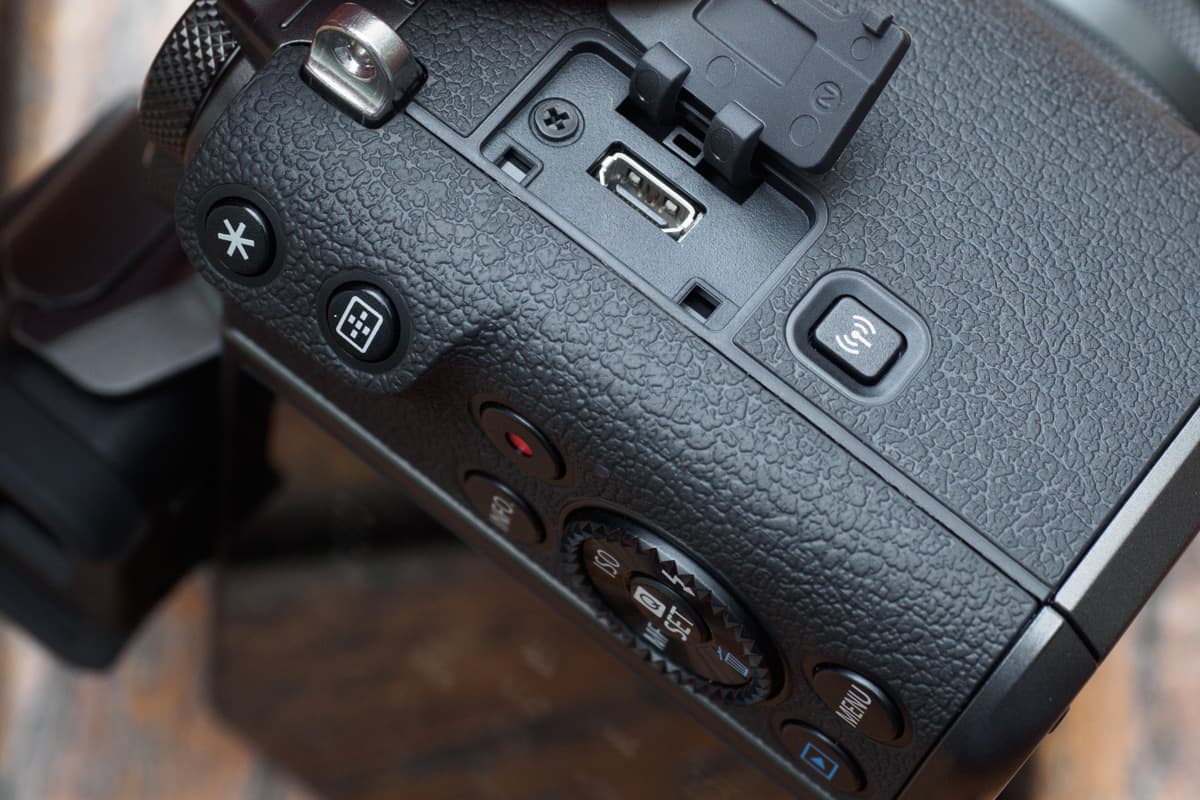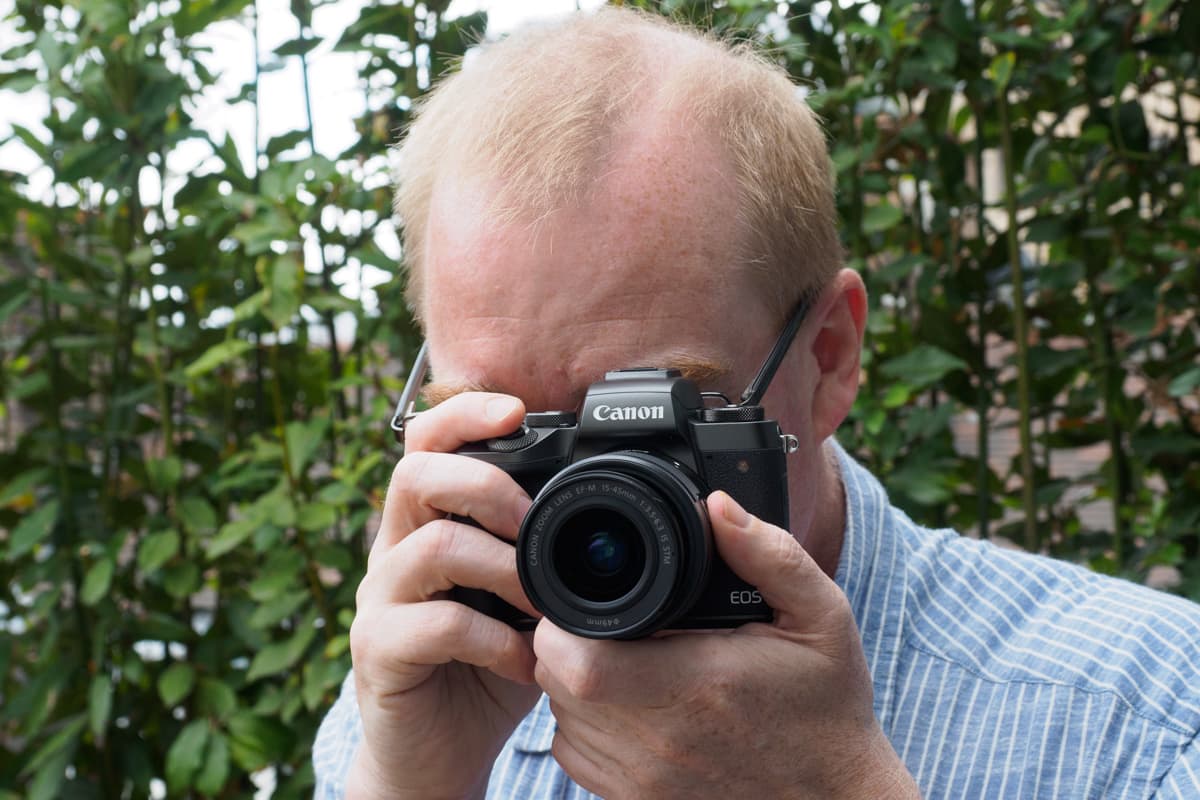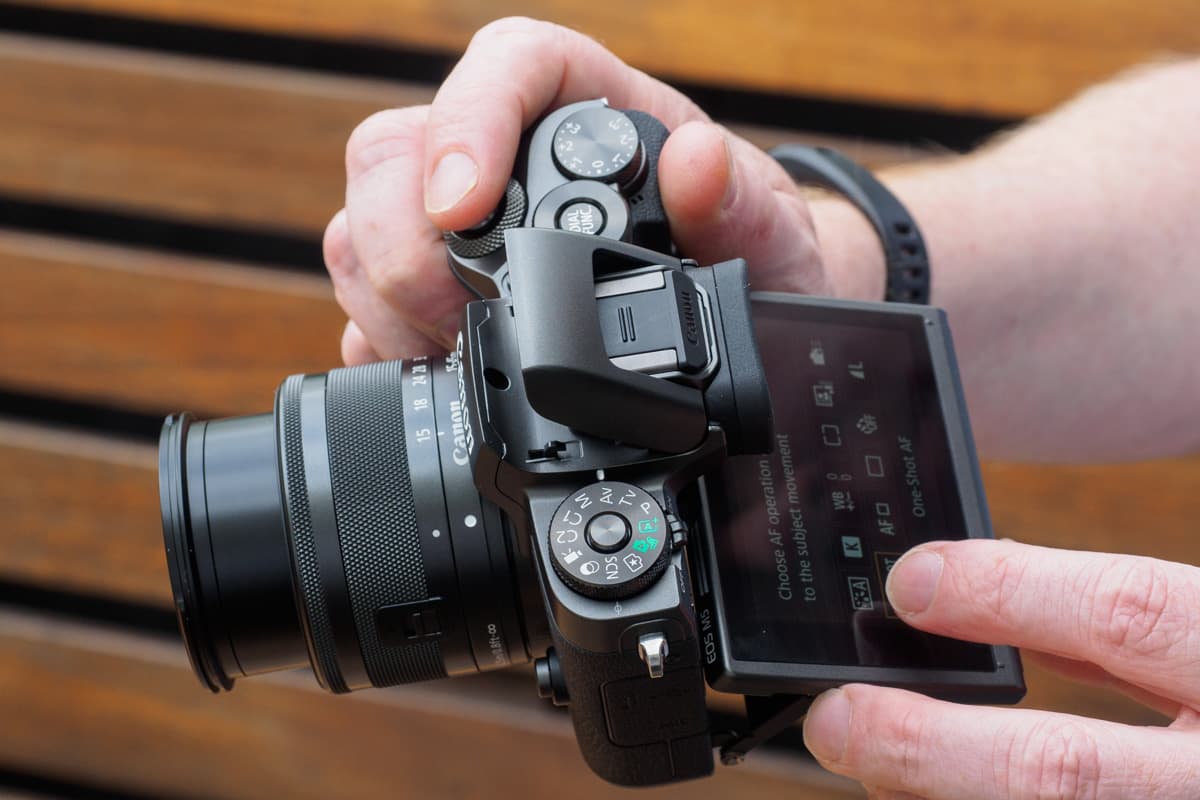Canon EOS M5 review: Introduction
Canon EOS M5: At a glance
- £1,049 body only, £1,149 with 15-45mm lens, £1,399 with 18-150mm lens
- 24.2MP APS-C sensor
- Dual Pixel CMOS AF
- ISO 100-25,600
- 7fps with AF between frames
- 2.36-million-dot EVF
- 3in 1.62-million-dot tilting touchscreen
Although Canon launched its first mirrorless camera, the EOS M, back in 2012, the company has never quite seemed to take the idea seriously until now. The original EOS M was over simplistic and painfully slow at focusing, and while last year’s EOS M3 was much improved, it was hamstrung by the lack of an integrated electronic viewfinder. To date, Canon has also only produced a limited range of native EF-M lenses for the system, most of which are slow, variable aperture zooms. But now, with the EOS M5, it has finally made a camera to turn enthusiast photographers’ heads.
In essence, the EOS M5 is a DSLR-like model with a centrally mounted electronic viewfinder and tilting rear touchscreen: a design blueprint that has proved popular with enthusiasts ever since the appearance of the original Olympus OM-D E-M5. Yet Canon has managed to cover the M5’s petite body with a well-thought-out array of buttons and dials that make it one of the nicest to use small CSCs we’ve yet seen. The addition of Dual Pixel CMOS AF and the latest DIGIC 7 processor makes it genuinely quick, too.
However, Canon hasn’t exactly done the EOS M5 any favours with regards to pricing. It costs around £1,049 body only, £1,149 with the compact EF-M 15-45mm f/3.5-6.3 IS STM zoom, or £1,399 with the new EF-M 18-150mm f/3.5-6.3 IS STM. All these will come with an adapter for Canon’s EF and EF-S DSLR lenses in the box; depending on how charitably you look at it, this is either an admission of the paucity of the EF-M lens range, or a clever move to increase the camera’s appeal to existing EOS users.
However, the problem facing the EOS M5 is that for the same, or less money, you can buy some very attractive cameras that match or beat it for features. For example, Fujifilm’s lovely little X-T10 has a similar feature set for less than half the price, while Panasonic’s bang up-to-date G80 brings a larger viewfinder, fully articulated screen, in-body image stabilisation, 4K video recording and weather-sealed construction for two thirds of the cost of the EOS M5. Then there’s Sony’s Alpha 6300, which has a sophisticated AF system and 11 frames per second shooting, still at a lower price. Now, as we’ll see, the EOS M5 has some tricks of its own up its sleeve, but will these be enough to tempt Canon DSLR shooters to dip their toes into mirrorless waters?
Canon EOS M5 review: Features
At the EOS M5’s heart is a 24.2-million-pixel sensor with Canon’s Dual Pixel CMOS AF. It’s clearly closely related to that found in the EOS 80D, but updated for the M5, with gapless micro lenses for improved sensitivity. Its Dual Pixel design splits each of the light-sensitive pixels into two photodiodes, right and left, and this enables phase detection for autofocus, similar to the systems traditionally found in DSLRs. Crucially, though, the M5 is also just the second model after the PowerShot G7 X Mark II to sport Canon’s new DIGIC 7 processor, which is said to be 14 times more powerful than the previous version. Putting this power behind the Dual Pixel sensor means the EOS M5 has a very capable AF system indeed.
Together, the sensor and processor enable a sensitivity range of ISO 100-25,600 with 14-bit raw output. The EOS M5 can shoot at seven frames per second with AF between shots, or nine frames per second with focus fixed, with a buffer of 26 frames in JPEG, or 16 in raw. Surprisingly, though, the 7fps mode doesn’t offer live view between frames, showing just a sequence of previously taken frames. This hampers your ability to follow moving subjects, and feels several years out of date.

There’s a small pop-up flash unit in the viewfinder housing, as well as a hotshoe for attaching EX-series flashguns
Shutter speeds range from 30 seconds to 1/4000sec plus bulb, and as usual Canon uses an electronic first curtain shutter, which eliminates any vibrations before the exposure is made. Unusually, though, the M5 has no fully electronic silent shutter option, which is now a standard feature on most similar models. The mechanical shutter is comparatively noisy, too, making a distinctly audible clack, so unlike many other recent mirrorless models, it’s not ideal for shooting in quiet environments.
When it comes to additional photographic features, however, the EOS M5 is relatively sparse. It has an array of subject-based scene modes and creative filters for image processing effects, along with Canon’s beginner-friendly Creative Assist mode that gives a results-oriented method for users to adjust their shots. But if you’re looking for such things as automatically stitched panoramas, focus bracketing or high dynamic range shooting, it’s not the best choice. Canon does at least provide a nicely designed in-camera raw converter.
Canon EOS M5 review: Viewfinder and screen
For eye-level viewing, the M5 uses a 2.36-million-dot OLED EVF similar to that used in the PowerShot G5 X. With a 120fps live view feed and a magnification of around 0.62x, it’s considerably smaller than those in similarly priced competitors, and indeed comparable in size to the EVFs used in much cheaper cameras such as the Fujifilm X-T10 and Olympus OM-D E-M10 Mark II. This is exacerbated by the overly saturated and contrasty display, which exaggerates colours and makes shadow areas difficult to see in bright light (unlike on many other models there’s no facility to adjust the EVF’s colour or contrast, just its brightness). However, the viewfinder provides a reasonably useful indication of whether highlights might clip, and naturally gives a much more accurate depiction of depth of field compared to the optical viewfinders of DSLRs.
The EVF is complemented by a 3.2in 1.62-million-dot LCD that tilts upwards for use a waist-level finder, or downwards for overhead shots. It can even be set to face fully forwards beneath the camera for selfies, rather like the Olympus Pen E-PL7 and E-PL8. It’s bright, sharp and clear and its 3:2 aspect ratio matches the sensor perfectly. An eye sensor allows the camera to switch from the LCD to EVF automatically, or alternatively you can set a custom button to do this manually. But the difference between the two displays is huge; shots that appear rich and colourful in the EVF often look much lighter and washed out on the LCD. The reality, when viewing image files later on a calibrated monitor, tends to be somewhere between the two.
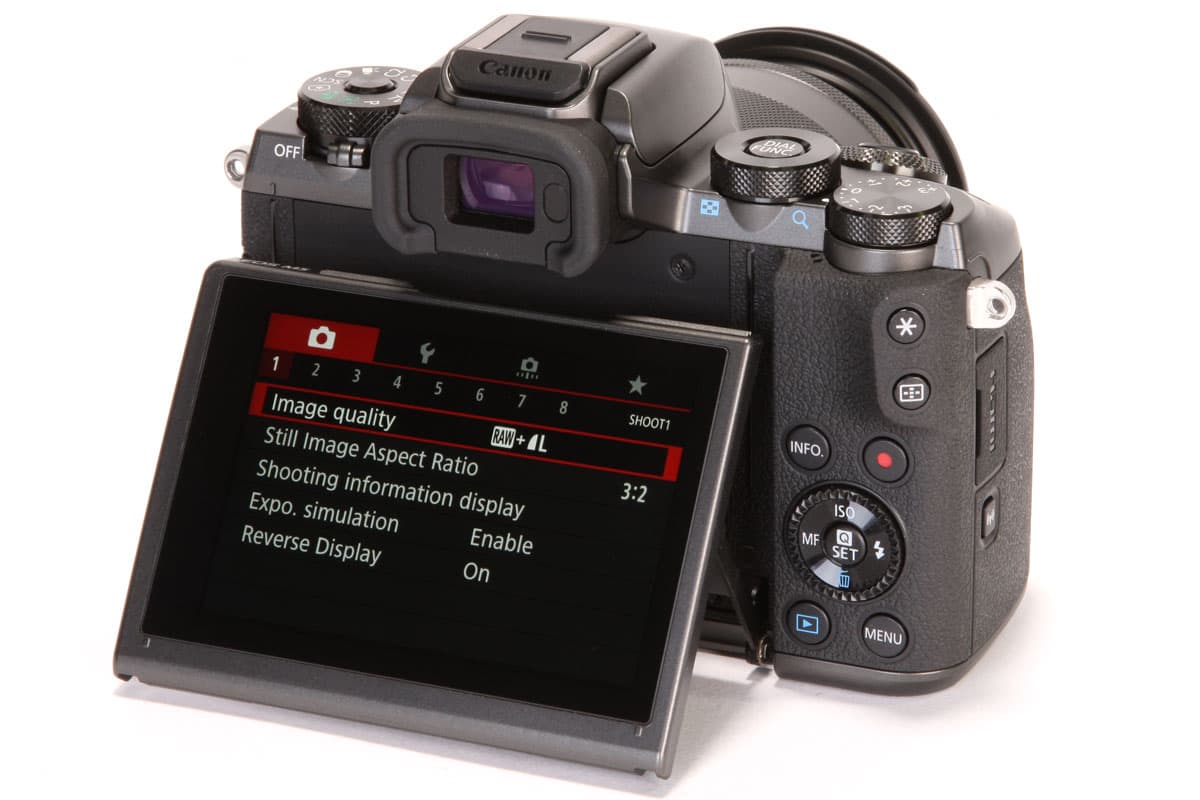
The touch-sensitive LCD tilts upwards by 85° and downwards by 180° to face forwards underneath the camera’s body for selfies
Both the viewfinder and screen can display useful additional information during shooting, including a well-designed dual-axis electronic level and a live histogram that can show red, green and blue channels separately, a handy trick that is unique to Canon. You can configure up to three display modes with different amounts of information, and cycle through them using the Info button. If you prefer using the EVF, the LCD can be set to show a detailed status screen/ quick control panel.
Canon EOS M5 review: Build and handling
The Canon EOS M5’s body is primarily polycarbonate rather than aluminium or magnesium alloy, but it still manages to feel sturdy in your hand, aided by a nicely shaped, if somewhat small rubber-coated grip. Indeed, it handles remarkably well for a small camera that measures just 115.6 x 89.2 x 60.6mm and weighs 427g, although those with larger hands may well find it all a bit cramped. The impression of quality is maintained by the attractive gunmetal top plate and beautifully knurled metal dials. These manage to combine being well placed and easy to use, but difficult to knock accidentally, which sadly can’t be said of all cameras. Unfortunately, Canon doesn’t claim any level of weatherproofing, which is disappointing at this price point.
While the design and control layout are an evolution of the EOS M3’s, with an exposure compensation dial and main electronic dial around the shutter release, Canon has added an additional thumb dial on the top plate. This has a Dial Func button in its centre, pressing which cycles the dial through controlling various functions including ISO, white balance and (in manual-exposure mode) aperture setting. You can choose to add further settings to the list, such as metering, drive and focus modes, and configure the dial separately for movie shooting. This all turns out to be a excellent way of putting lots of control at your fingertips, allowing you to change key exposure settings without having to take your eye from the viewfinder. Indeed, in some regards it works better than any of Canon’s DSLRs, such as when shooting in manual-exposure mode with Auto ISO.
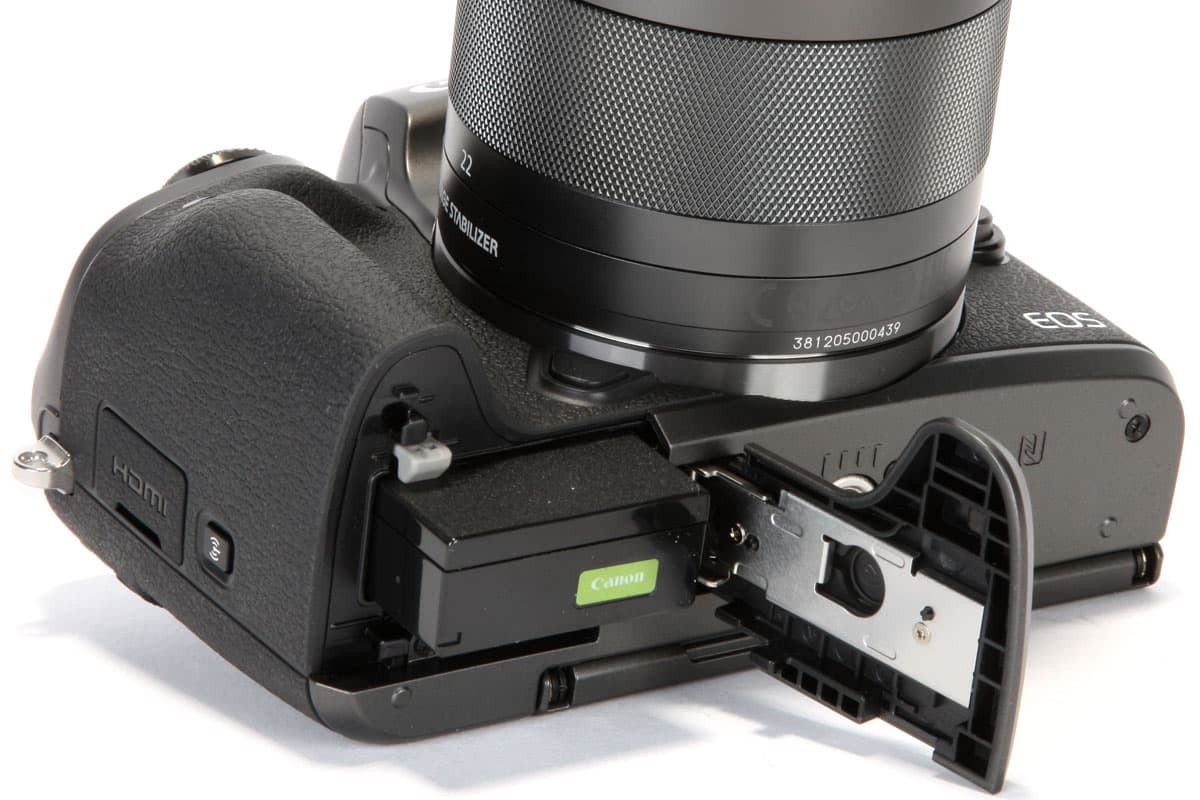
The EOS M5 promises 295 shots per charge from its LP-E17 battery, or 420 in its power-saving ECO mode.
The d-pad on the camera’s back provides direct access to ISO, flash mode and manual focus, and is surrounded by a somewhat fiddly fourth control dial that is mainly used to change secondary settings and in playback mode. Sadly, the d-pad can’t be set to move the autofocus point around the frame directly, as on other similar cameras; instead you have to press the AF area button on the camera’s shoulder first, which can be difficult to locate by touch and easily mixed up with the auto exposure lock button. The focus point can be placed almost anywhere around the frame and two sizes of AF area are available, the smaller of which is handy when dealing with finely detailed subjects. But other brands such as Panasonic and Fujifilm offer considerably more flexibility in this respect.
A button on the front plate is by default set to toggle the touchscreen AF area selection function on and off, while on the top plate there’s a configurable M-Fn button that oddly is set to do nothing at all. But practically all of the button functions can be reassigned to functions of your choosing, so most users should be able to set it up to suit their shooting. Add in the comprehensive on-screen control panel and customisable Q Menu, plus two user-configurable Custom modes accessed from the main mode dial, and you should rarely have to dip into the menus while shooting.
The rear screen is touch sensitive, and thanks to Canon’s excellent interface it complements the physical controls very well. Not only can it be used to change almost any setting, it’s also available for selecting the autofocus point, even when using the electronic viewfinder. We’ve seen this on plenty of cameras before, but the EOS M5’s implementation allows you to choose the area of the screen you wish to use. You can either use the whole screen, left or right halves, or any of the four quarters. If you set the Position Method to Relative, the camera won’t reset the focus point if your nose contacts the touchscreen while shooting, either. Together these options make the EOS M5’s touchpad AF point selection more usable than many of its rivals, although it’s still no substitute for a dedicated control.
Canon EOS M5 review: Autofocus
Previous Canon EOS M-series cameras have been a noticeably sluggish when it comes to autofocus, but with its Dual Pixel AF and snappy processor, the EOS M5 is an entirely different matter. With native EF-M lenses it’s very comparable to other recent mirrorless models, acquiring accurate focus on static subjects in the blink of an eye. Because the AF system uses the main image sensor rather than a separate light path as in DSLRs, AF is also exceptionally accurate, with no tendency to front or back focus, as long as you pick a focus target with suitably high contrast.
More impressively, the EOS M5 also works very well with legacy EF-mount DSLR lenses on the Canon EF-EOS M mount adapter, and not just those with high-powered USM motors. We tested it with everything from a modern Sigma 50mm f/1.4 DG HSM Art back to the original micromotor-driven EF 50mm f/1.8, including a Micro USM-powered EF 70-300mm f/4-5.6 IS USM, and even an old Sigma 28-70mm f/2.8 EX DG. All autofocused quickly and decisively, much as they would on DSLR, and I’d have no hesitation using EF lenses for everyday shooting. Indeed the only point where the EOS M5 struggled was when trying to autofocus with slow EF lenses in low light. Compared to Canon’s previous mirrorless models, it’s a huge step forward.
Manual focus hasn’t been neglected, with a focus peaking display available in a choice of three colours and two sensitivity levels. It can either be set to display whenever you’re using manual focus, or toggled on and off using a function button. A magnified view is also available by pressing the AF area button and spinning the front dial, but unusually can’t be made to engage automatically whenever you turn the focus ring.
Canon EOS M5 review: Video
Video recording is available in full HD resolution at up to 60fps, with a built-in 3.5mm stereo socket for adding an external microphone (but no headphone socket). However, there’s no 4K video option, which this year we’ve seen as standard from companies such as Sony and Panasonic. You do at least get full manual control over exposure in video mode. You can also record time-lapse movies.
There’s 5-axis image electronic stabilisation on board for video recording, meaning footage is stabilised even when using non-IS lenses, and the electronic stabilisation can be combined with optical stabilisation when using compatible EF-M or EF-S lenses. It does a reasonable job of reducing camera shake and smoothing out panning movements, but not surprisingly it’s nowhere near as effective as the mechanical systems found in rival cameras from Olympus and Panasonic.
It’s also possible to pull focus from one subject to another during recording simply by tapping the touchscreen. Here, the Dual Pixel AF really comes into its own, producing smooth, controlled focus transitions with no hunting or overshoot. You’ll need to use an STM lens for this, though; lenses with other focus motors are liable to give visible juddering.
Video quality is much as we’d expect from a camera that only records Full HD. Exposure, white balance and colour are all very creditable, but fine detail is lacking and sharpening artefacts very visible. It’ll probably be acceptable for stills photographers who are dabbling in video, but if you’re serious about getting quality footage then you’d be much better off buying a 4K-capable camera.
Canon EOS M5 review: Bluetooth and Wi-Fi connectivity
For the first time on a Canon camera, the EOS M5 adds low-energy Bluetooth 4.1 connectivity alongside Wi-Fi and Dynamic NFC. The idea is to maintain a permanent Bluetooth connection with your smartphone, which brings a number of benefits. Using the free Canon Camera Connect app for Android and iOS, you can use your phone as a simple remote release without having to waste time setting up a Wi-Fi connection, and with minimal impact on the battery life of either device. I found this really handy on several occasions.
The Bluetooth connection can also seamlessly activate the camera’s Wi-Fi from your phone for higher bandwidth tasks: copying images across for sharing, or controlling the camera remotely with a live view feed. You can browse your pictures on your phone and pull across your favourites, but more unusually, you can also view them on the camera and push them to your phone.
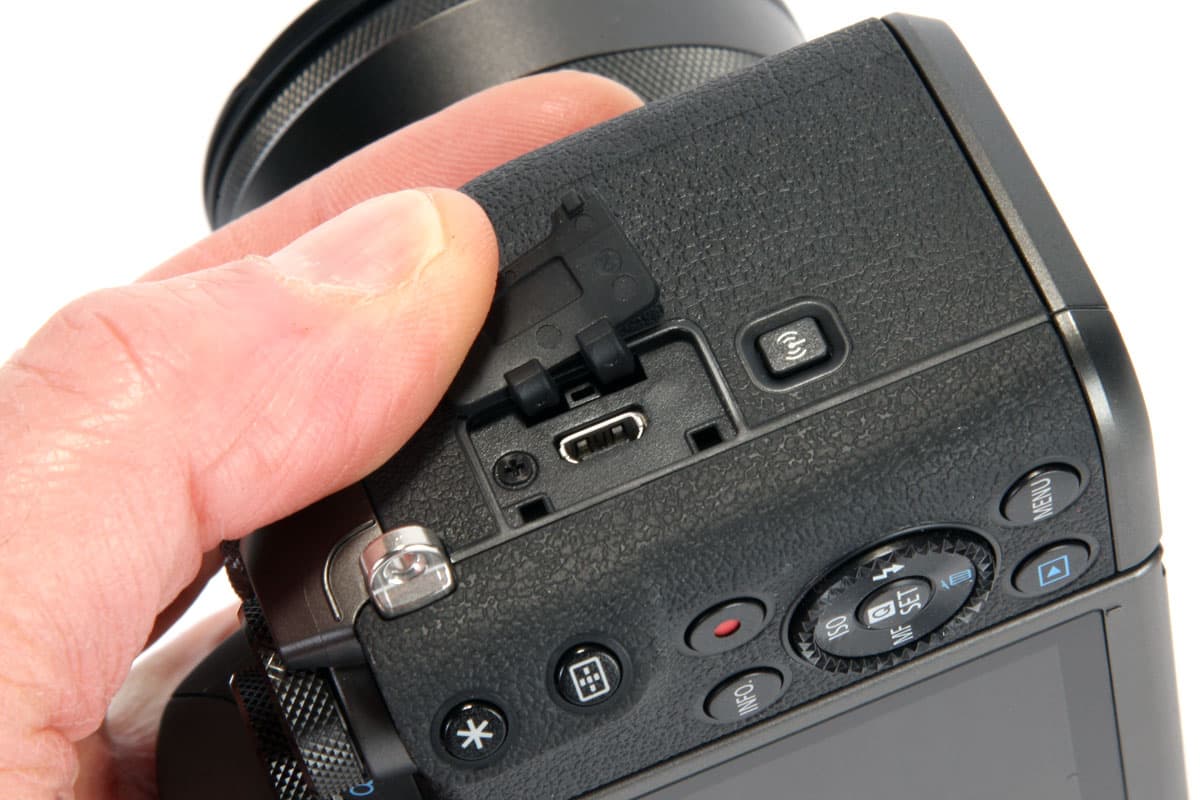
A small button on the side of the handgrip below the HDMI port initiates a wireless connection to your smartphone, tablet or printer.
As usual with Canon, the Wi-Fi can also do rather more than just connect to a mobile device. You can print directly to a Wi-Fi enabled printer, or connect wirelessly to a smart TV to view your images. The camera remembers a list of your devices that is displayed by pressing the dedicated Wi-Fi button on the side of the grip, making it particularly easy to switch between connecting to your tablet, phone, TV or printer. In practice, this all works really well; I used the M5 with my iPhone SE, Samsung tablet and Epson printer, and everything worked flawlessly. Overall, it makes for a really straightforward, yet powerful wireless system that I consider to be the best I’ve yet used.
Canon EOS M5 review: Performance
When put to practical use, the EOS M5 generally delivers very decent results. It’s snappy in all aspects of its operation, powering up quickly and responding to controls promptly with no lag. It’s the kind of camera that gets out of your way and never feels like it’s holding up your shooting, which is exactly what you want.
Canon’s evaluative metering is on the whole very reliable, although it’s quite strongly linked to the AF area so tends to overexpose when focusing on a dark part of the scene. But you can see this in the viewfinder and apply exposure compensation accordingly, aided by the live histogram. Auto white balance is likewise very well judged, and Canon’s JPEG output gives attractive colours that are saturated without being overblown, and with particularly fine skin tones.
The default Standard picture style uses somewhat unsubtle noise reduction and sharpening algorithms, but switching to the Fine Detail style delivers much better resolution with the same colour rendition. At higher sensitivities of ISO 3200 and above, the processing prioritises colour retention over detail, so files look distinctly mushy when examined at the pixel level. Other brands do rather better in this respect, most notably Fujifilm. As is often the case, you’re likely to get better results at high ISOs by shooting and carefully processing raw files.
Canon EOS M5 review: Image quality
Canon has equipped the EOS M5 with its latest 24-million-pixel Dual-Pixel CMOS sensor, and as a result it delivers some of the best image quality we’ve seen from any of the firm’s APS-C cameras, matching the EOS 80D. Resolution is high, due to an optical low-pass filter that appears to be relatively weak, and low-ISO dynamic range is very impressive. Indeed, few APS-C models from any brand produce obviously better image quality, aside from at very high ISO settings.
Resolution
The EOS M5 performs strongly in our resolution chart tests, with numbers very similar to the EOS 80D and rather better than we recorded for the EOS M3 (suggesting a rather weak optical low-pass filter). Looking at standard JPEGs, we see a resolution of around 3,400 lines per picture height at ISO 100, which is very respectable for a 24-million-pixel sensor. Naturally, resolution falls as the ISO is raised and noise impacts the image, to around 2800 l/ph at ISO 1600, 2600 l/ph at ISO 6400, and just 2100 l/ph at ISO 25600.
Multiply the numbers below the lines by 200 to give the resolution in l/ph.

Canon EOS M5 resolution ISO 100 JPEG

Canon EOS M5 resolution ISO 200 JPEG

Canon EOS M5 resolution ISO 400 JPEG
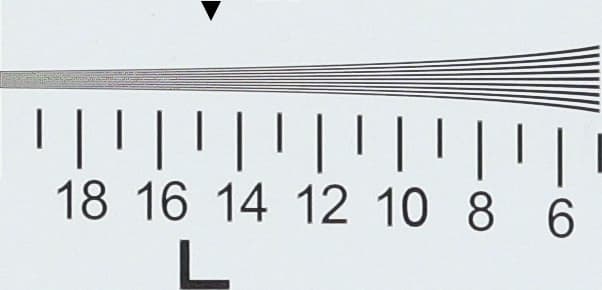
Canon EOS M5 resolution ISO 800 JPEG
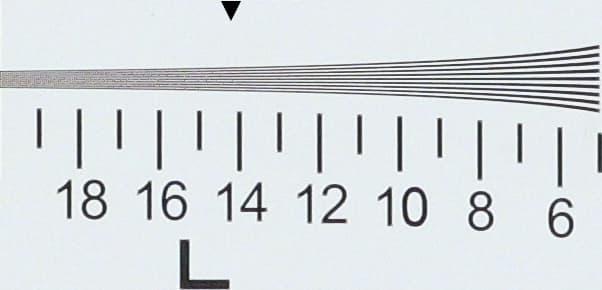
Canon EOS M5 resolution ISO 1600 JPEG

Canon EOS M5 resolution ISO 3200 JPEG
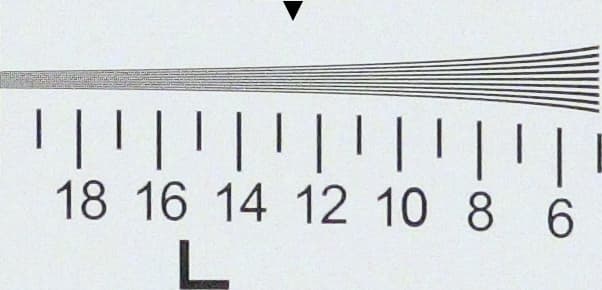
Canon EOS M5 resolution ISO 6400 JPEG

Canon EOS M5 resolution ISO 12800 JPEG

Canon EOS M5 resolution ISO 25600 JPEG
Noise
At low ISOs, the EOS M5 gives very clean images, with barely any visible noise. However, in the Standard picture style, unsophisticated sharpening results in a rather mushy rendition of the finest details, and to get the most from the camera you’ll need to either switch to the Fine Detail style, or adjust the sharpening Fineness setting. Image quality remains excellent up to ISO 800, but beyond this, noise starts to have a more visible impact on the files. ISO 1600 and ISO 3200 are still just fine at smaller output sizes, but by ISO 6400 almost all fine detail has been lost, and the shadows appear mushy. At the two highest settings of ISO 12,800 and ISO 25,600, noise overwhelms the image, so these are best left alone unless there’s no other option.

Canon EOS M5 ISO 100 JPEG

Canon EOS M5 ISO 200 JPEG
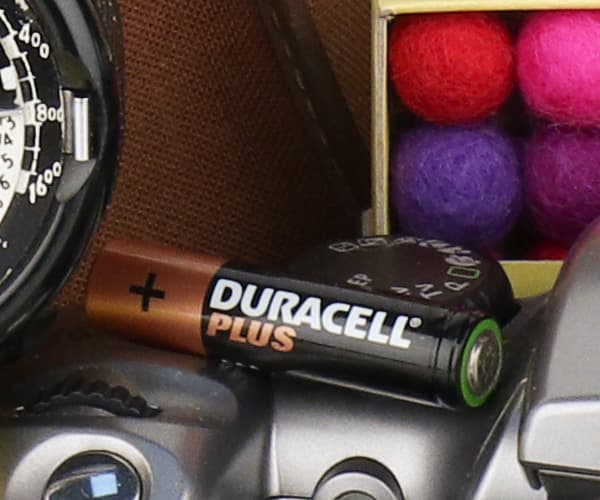
Canon EOS M5 ISO 400 JPEG
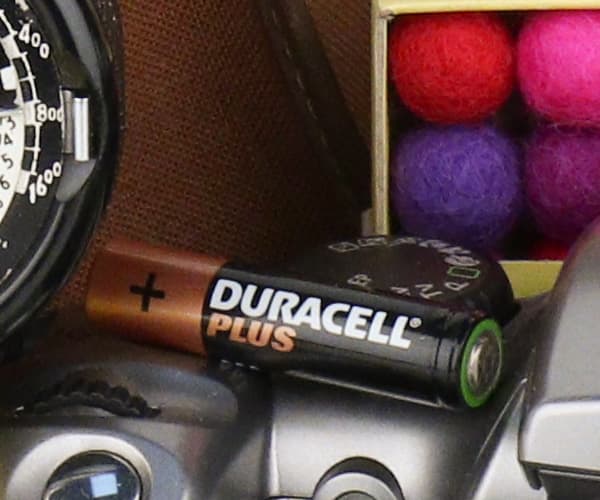
Canon EOS M5 ISO 800 JPEG
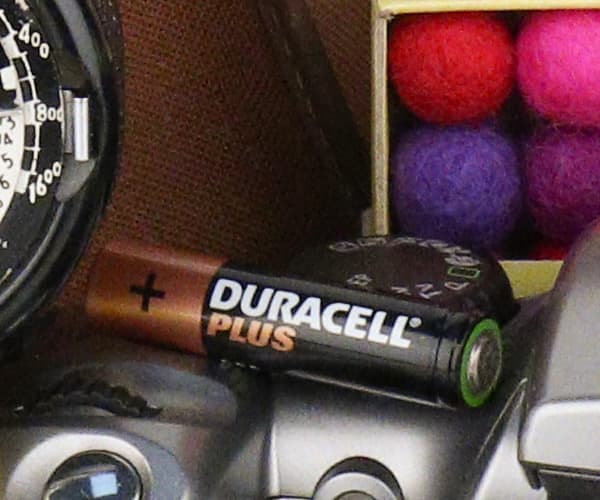
Canon EOS M5 ISO 1600 JPEG
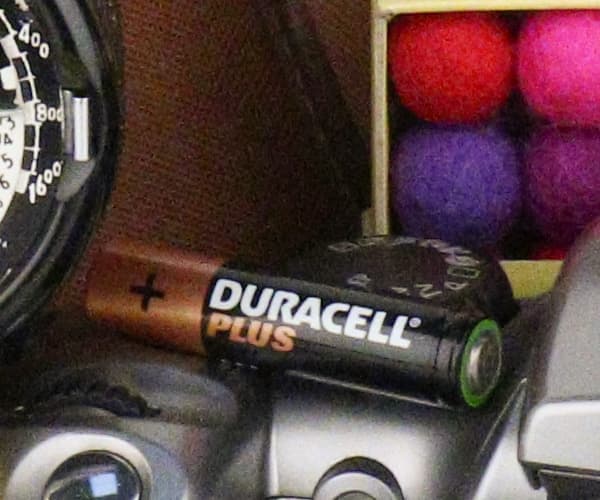
Canon EOS M5 ISO 3200 JPEG
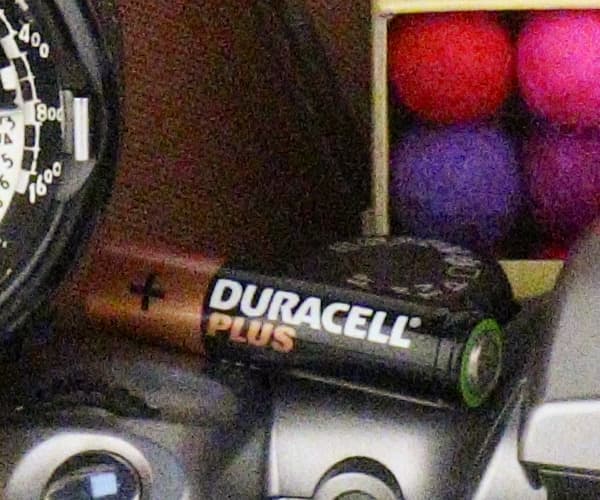
Canon EOS M5 ISO 6400 JPEG
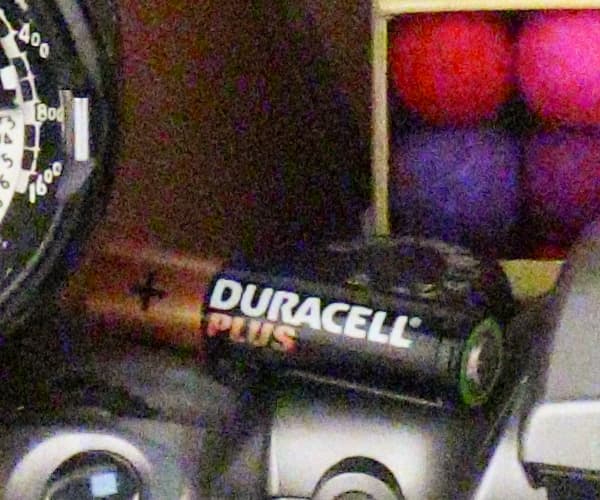
Canon EOS M5 ISO 12800 JPEG
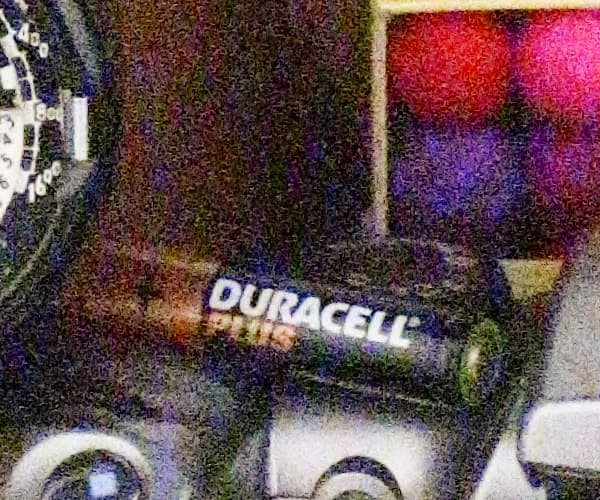
Canon EOS M5 ISO 25600 JPEG
Dynamic range
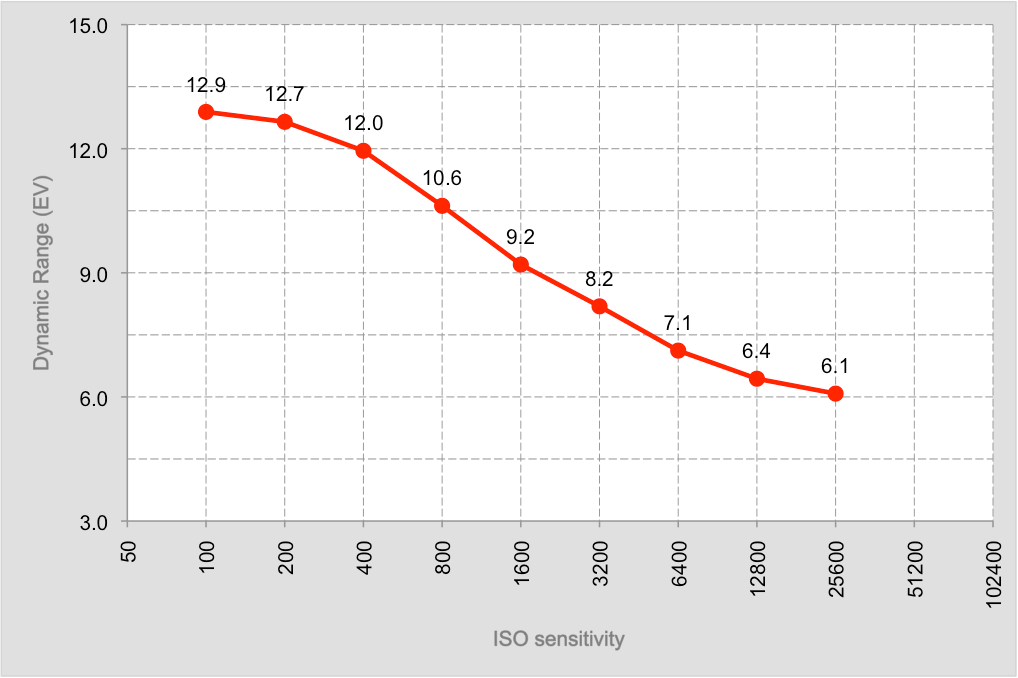
Canon EOS M5 dynamic range
With Canon’s latest APS-C sensor onboard, the EOS M5 delivers an impressive set of results in our Applied Imaging tests. Results close to 13 EV at low ISO indicate that there should be significant scope to recover lots of shadow detail when processing raw files. Naturally, the dynamic range drops as the ISO is raised, but it stays quite respectable up to ISO 3200 at least. However, as we often tend to see, very low figures at the highest two ISO settings indicate their marginal usability, with significant noise and minimal detail likely to be visible in darker tones of the image.
Canon EOS M5 review: Verdict
With the EOS M5, Canon has finally made the kind of mirrorless model that its users have been asking for. With its built-in electronic viewfinder and plentiful set of controls, it should appeal strongly to enthusiasts in a way the firm’s previous models patently haven’t, while its Dual Pixel autofocus works remarkably well even with old EF-mount SLR lenses. This means it certainly has a lot of potential for persuading Canon’s dyed-in-the-wool DSLR users to try out mirrorless technology for the first time, especially with the EF lens adapter included in the box.
The camera handles well, too, with all those buttons and dials making it quick and easy to change exposure settings, although those with larger hands might find it all a bit cramped. One aspect where it falls painfully short, however, is focus area selection; it’s inexcusable for a body costing over £1,000 not to have a dedicated control for this function. However, image quality is very good indeed, and the camera gives you all the information you need to override its automated systems on the rare occasions they get things wrong.
But while there’s a great deal to like about the EOS M5, in some ways it does feel rather behind the times. The relatively noisy shutter and lack of a silent electronic option makes it less discreet than we’ve come to expect from recent mirrorless models, and the inability to show a live view feed during continuous shooting is also a few years out of date. And while the relatively small viewfinder, tilt-only screen and non-weathersealed construction would be forgivable if the camera’s cost was closer to the similarly-specified Fujifilm X-T10 or Olympus OM-D E-M10 Mark II, the fact is that cameras like the Panasonic G80 and Sony A6300 simply give you much more for your money.
Indeed, the huge problem for the EOS M5 is its price, and this makes it difficult to rate. I suspect Canon would argue that you’re paying for a sophisticated sensor and processor, and to be perfectly honest I think we’re going to have to get used to all new cameras looking much more expensive in the immediate future. But right now, £1,049 body-only is simply too much to pay in this competitive sector. However, if the price were to drop closer to £800 then the EOS M5 would be a much more serious contender.

Canon EOS M5 review: hands-on first look
Below is our archived first look at the Canon EOS M5
https://link.brightcove.com/services/player/?bctid=5124083226001
At a glance:
- 24.2-million-pixel APS-C sensor
- Dual Pixel CMOS AF
- ISO 100-25,600
- 9fps with focus fixed, 7fps with AF between frames
- 2.36-million-dot EVF
- 3in 1.62-million-dot tilting touchscreen
- Full HD video recording
- £1,049 body only, £1,149 with 15-45mm lens, £1,399 with 18-150mm lens
Although Canon launched its first mirrorless camera, the EOS M, back in 2012, the company has never quite seemed to take the idea seriously. Like its great rival Nikon, Canon apparently preferred to protect its entry-level DSLRs instead, with only six native EF-M lenses for the system appearing to date. However, with the Canon EOS M5, it has finally made a camera to turn enthusiast photographers’ heads.
In essence, the EOS M5 is a DSLR-like model with a centrally mounted electronic viewfinder and tilting rear touchscreen. This is a design blueprint that has proved popular with photographers ever since the appearance of the original Olympus OM-D E-M5. Yet Canon has managed to cover the M5’s petite body with a well-thought-out array of buttons and dials that promise to make it one of the nicest-to-use small CSCs we’ve yet seen. The addition of Dual Pixel CMOS AF and the latest DIGIC 7 processor means that it feels genuinely quick, too.
The Canon EOS M5 is scheduled to go on sale at the end of November, with a price of £1,049 body only, or £1149 with the compact EF-M 15-45mm f/3.5-6.3 IS STM zoom. In mid-December a kit with the new EF-M 18-150mm f/3.5-6.3 IS STM lens will be available, for £1,399. In an apparent admission of the paucity of the native EF-M lens range, all these will come with an adapter for Canon’s EF and EF-S DSLR lenses in the box.
Features

There’s a small pop-up flash unit in the viewfinder housing, as well as a hotshoe for attaching EX-series flashguns
Canon says the 24.2-million-pixel sensor is new for the EOS M5, and while it’s closely related to that found in the EOS 80D, it has gapless micro lenses for improved sensitivity. Meanwhile, the M5 is just the second model after the PowerShot G7 X Mark II to sport Canon’s new DIGIC 7 processor, which is said to be 14 times more powerful than the previous version. Together the two enable a sensitivity range of ISO 100-25,600 and 14-bit raw output. The EOS M5 can also shoot at seven frames per second with AF between shots, or nine frames per second with focus fixed, with a 26-frame JPEG buffer.
For viewing, there’s a 2.36-million dot OLED EVF similar to that used in the PowerShot G5 X. With a 120fps live view feed and a magnification of around 0.62x, it’s also comparable to those used in cameras like the Fujifilm X-T10 and Olympus OM-D E-M10 Mark II. It’s complemented by a 3.2in 1.62-million-dot LCD that tilts upwards for use a waist-level finder, or downwards for overhead shots. It can even be set to face fully forwards beneath the camera for selfies, rather like the Olympus Pen E-PL7.
The screen is touch-sensitive, and thanks to Canon’s excellent interface it complements the physical controls very well. Not only can it be used to change almost any setting, but it’s also available for selecting the autofocus point, even when using the electronic viewfinder. We’ve seen this on plenty of cameras before, but the EOS M5’s implementation cleverly allows you to choose the area of the screen you wish to use. You can either use the whole screen, left or right halves, or any of the four quarters.
Video
Video recording is available in full HD resolution at up to 60fps, with a built-in 3.5mm stereo socket for adding an external microphone (but no headphone socket). Somewhat surprisingly there’s no 4K video option, which we’ve started to see almost as standard recently from companies such as Sony and Panasonic. However you do at least get full manual control over exposure in video mode.
There’s 5-axis image stabilisation on board, but it’s electronic so unlikely to be as effective as the mechanical systems found in rival cameras from Olympus and Panasonic. However, it means footage will be stabilised even when using non-IS lenses, and the electronic stabilisation can be combined with optical stabilisation when using compatible EF-M or EF-S lenses. It’s also possible to pull focus from one subject to another during recording simply by tapping the touchscreen.
Build and handling
The Canon EOS M5’s body is primarily polycarbonate rather than aluminium or magnesium alloy, but it still manages to feel sturdy in your hand, aided by a nicely sculpted rubber-coated grip. Indeed, it handles remarkably well for a small camera that measures just 115.6×89.2×60.6mm and weighs 427g. The impression of quality is maintained by the attractive gun-metal top-plate and beautifully knurled metal dials. Canon says these have been designed to be easy to use, but difficult to knock accidentally, and judging by my time with the camera it appears to have achieved these aims.
In fact, the design and control layout are an evolution of the EOS M3’s, which I found to be a very pleasant camera to use. But alongside an exposure compensation dial and electronic dial around the shutter release, Canon has added an additional thumb dial on the top-plate. Pressing the Dial Func button in its centre cycles through various functions depending on the exposure mode, including ISO, white balance and drive mode. At first sight, this looks like it should be a really nice way of putting lots of control at your fingertips. Add in the comprehensive on-screen control panel and even touchscreen sceptics should rarely have to dip into the menus.
Bluetooth connectivity
For the first time on a Canon camera, the EOS M5 adds low-energy Bluetooth 4.1 connectivity alongside Wi-Fi and Dynamic NFC. The idea is that this can maintain a permanent connection to a smartphone, allowing it to be used as a remote shutter release without a huge impact on battery life. It can also be used to turn on Wi-Fi for copying images across for sharing, or controlling the camera remotely with a live view feed. This means it’s a little different to Nikon’s latest SnapBridge technology, which uses Bluetooth to automatically transfer every image you take to your phone. Traditionalists will be pleased to find that the EOS M5 can also use both wired and infrared remote releases.
Canon EF-M 18-150mm f/3.5-6.3 IS STM superzoom lens
Alongside the EOS M5, Canon has revealed the EF-M 18-150mm f/3.5-6.3 IS STM lens. With an 8.3x range equivalent to 29-240mm on full frame, the lens includes optical image stabilisation. With a claimed 4-stop benefit for low-light handheld shooting, this includes full compatibility with the EOS M5’s 5-axis electronic IS. A stepper motor promises fast, silent autofocus, and there’s a seven-bladed circular aperture designed to give smooth out-of-focus blur. Weighing just 300g, the lens is due in mid-December for £429.
Canon EOS M5 accessories
Canon has also shown some further accessories for the EOS M5, although details are scarce. The EH29-CJ body jacket is a half-case in either black or brown leather, and there’s a matching EM-300DB premium neckstrap too.
Canon EOS M5: First impressions
With the EOS M5, it seems Canon has finally made the mirrorless model that everyone has been asking for: DSLR-styled with a central viewfinder and lots of external control for enthusiast shooters, plus Dual Pixel autofocus. It certainly has a lot of potential for persuading Canon’s dyed-in-the-wool DSLR users to try out mirrorless technology for the first time, especially with the EF lens adapter included to ease the transition. However, AF performance is still likely to be patchy with adapted EF lenses, especially those with older focus motors.
The stumbling block, however, could be the price: the £1,049 Canon EOS M5 looks broadly comparable in terms of specification to the Fujifilm X-T10, which currently costs around £450 body only. Alternatively, for around the same price as the EOS M5, you could buy a Sony Alpha 6300, which includes 4K video recording, weatherproof build and hugely capable autofocus. Even so, we’re excited to see Canon finally making a mirrorless model that enthusiast photographers could get excited about, and we’re certainly looking forward to getting hold of one for a full review.

